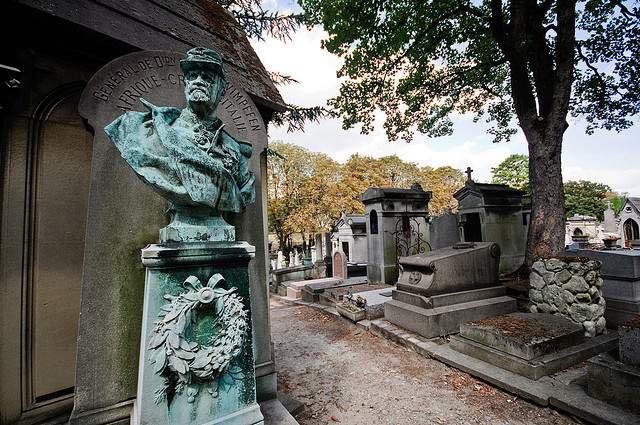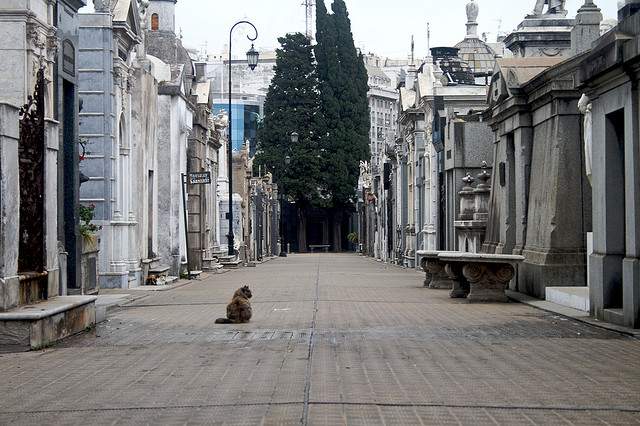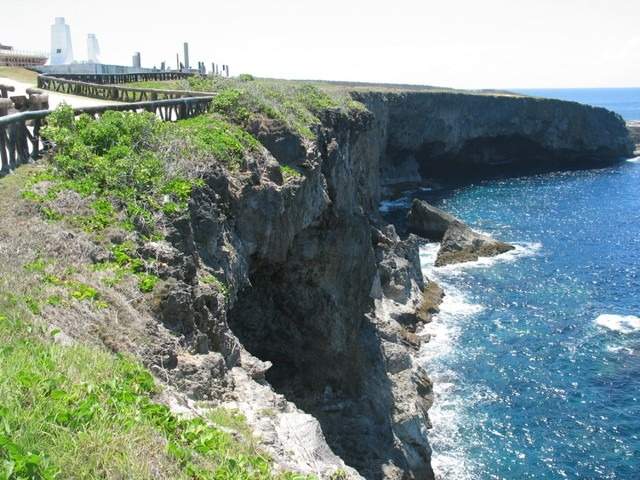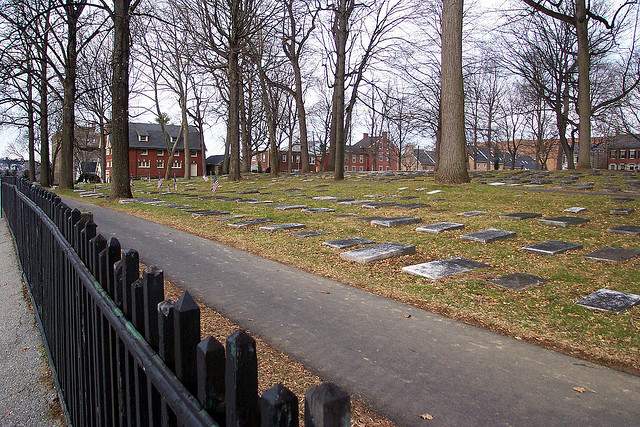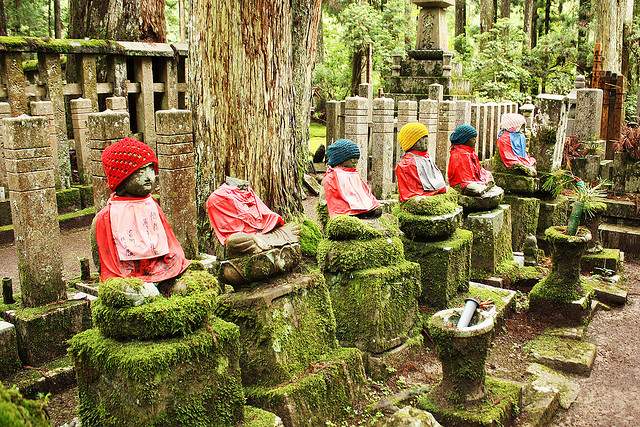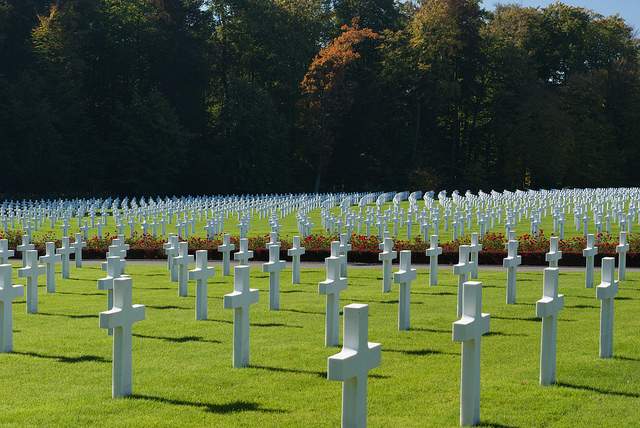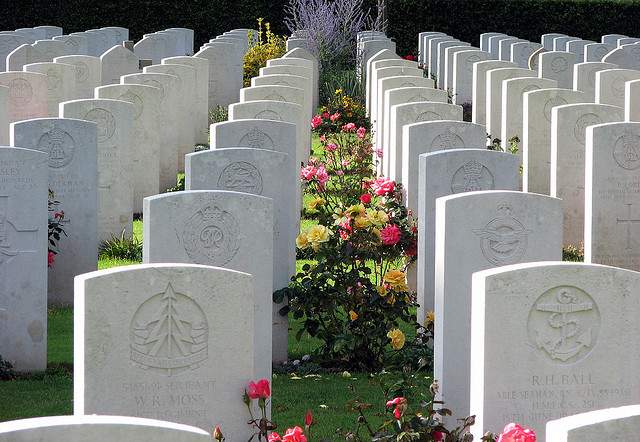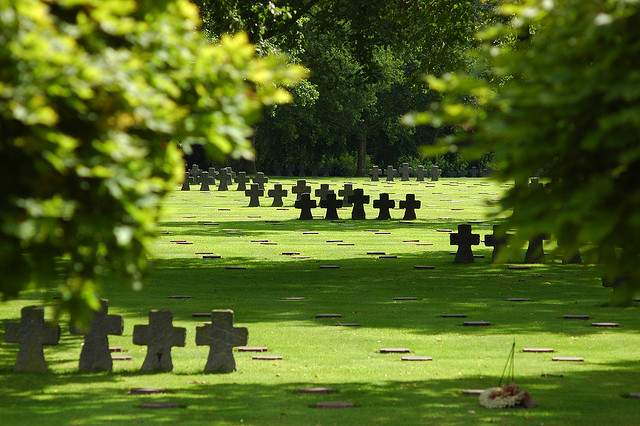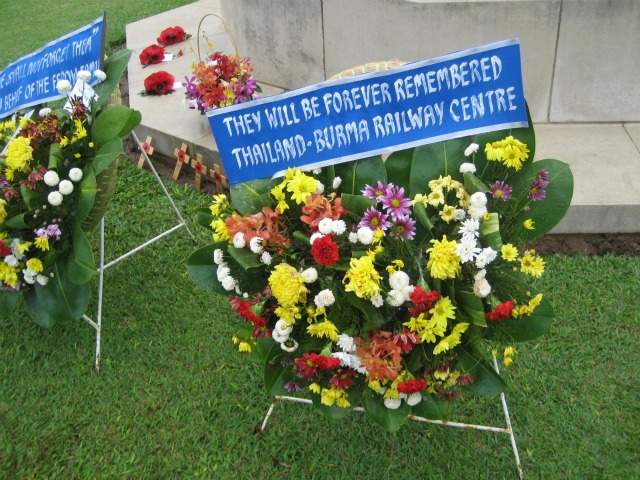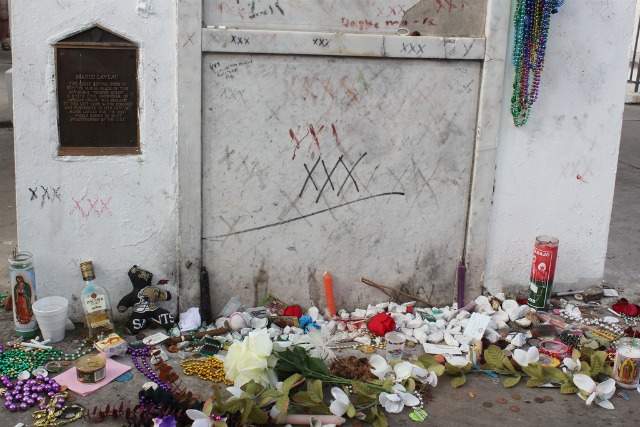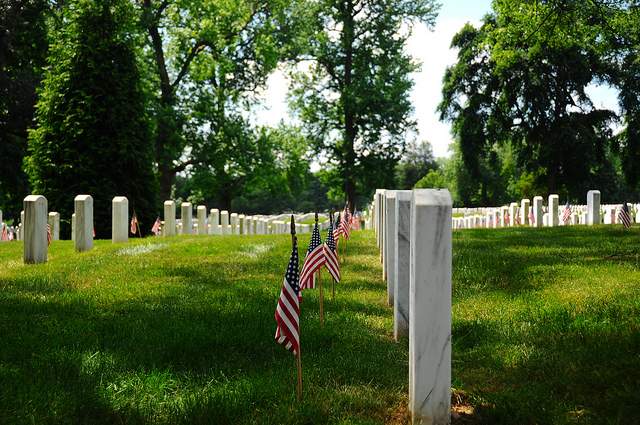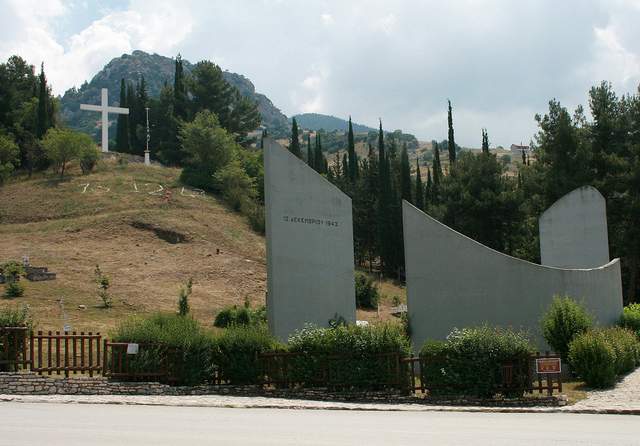Human beings have honored their dead since the dawn of time – even Neanderthals buried the fallen. In fact, burial is the oldest of human rituals. From simple stone dolmens to the glory of the pyramids, humans have spent a lot of time and energy providing the deceased with a decent send-off.
Modern cemeteries run the gamut from park-like settings with simple gravestones to elaborate cities of the dead with architecture rivaling buildings designed for the living. Basic or bombastic, cemeteries tell us how people died, but also how they lived.
Here are some of the most fascinating cemeteries on earth:
Père Lachaise — Paris
With over 70,000 burial places, Père Lachaise is Paris’s largest cemetery and one of the world’s most famous graveyards. Established in 1804, this is a true city of the dead with tree-lined avenues and clearly posted street names — a hauntingly beautiful place with expressive sculptures at every turn and lanes of ornate, side-by-side mausoleums. As you would expect, Père Lachaise is home to scores of the rich and famous including Oscar Wilde, the star-crossed lovers Abelard and Heloise, and musical talents like Chopin, Edith Piaf, and Jim Morrison. But it also houses the strangely popular grave of Victor Noir.
Victor, whose real name is Yvan Salman, was a French journalist who adopted the debonair “Victor Noir” as his pen name. Unfortunately, he was killed in a duel with Pierre Bonaparte, a great-nephew of the Emperor Napoleon. To make circumstances even more poignant, Victor is said to have died the day before he was to be married.
In death, Monsieur Noir has become something of a fertility god known for his special powers. According to one romantic legend, a woman who kisses Victor’s cold lips and slips a flower into his upturned top hat will find a husband by the end of the year. Other more down-to-earth fables involve rubbing his well-endowed (and well-worn!) nether regions for a boost in your sex life. For some reason the tips of his shoes have been rubbed shiny also. Maybe skittish visitors go the shoe route?
The lewd activity surrounding Victor even drew the attention of the Parisian authorities. In 2004, a fence was erected to protect Victor, but following a public outcry, the barrier was removed, and Victor’s charms are once again accessible to all.
>> Read more about the cemeteries of Paris and check out our Paris Indie Travel Guide
[social]
La Recoleta – Buenos Aires
La Recoleta,located in a classy Buenos Aires neighborhood, is another elegant masterpiece of architecture for the afterlife. The wide pathways (which are often patrolled by resident cats) are lined with mausoleums noteworthy for their variety of styles: cathedral, art nouveau, and modernistic boxes that one guide described as “ATM-style.” This cemetery is also known for its eclectic symbols including a menorah with a cross, lots of Masonic pyramids, and even some statues of pagan gods. Although Eva Peron is the most famous resident, the most tragic story belongs to Rufina Cambaceres who was buried alive here.
On the day of her 19th birthday, Rufina discovered that her mother was sleeping with Rufina’s boyfriend. A stunned Rufina fell into a catatonic state and was declared dead by two physicians (called to the scene by her mother). The poor girl was buried but woke up screaming and clawing at her casket. By the time a cemetery guard discovered the cracked lid on her coffin, she had died (for real) of a heart attack. Talk about “Mommie Dearest!”
>> Find flights to Buenos Aires, find out how to experience the best of Buenos Aires year round, and read through our Buenos Aires Indie Travel Guide
Suicide and Banzai Cliffs — Saipan
The Suicide and Banzai Cliffs on Saipan are the scene of a historic tragedy that took place during WWII. In June of 1944, American forces took Saipan from the Japanese in a battle that was crucial to ending the war in the Pacific. In fact, the Enola Gay, the plane that dropped the atomic bomb on Hiroshima, flew out of the tiny island of Tinian located almost adjacent to Saipan. The appropriately named Suicide and Banzai Cliffs are covered with memorials marking the places where thousands of Japanese civilians, including parents and children, leaped to their deaths.
What triggered this mass suicide? Initially, it was thought that the Japanese civilians were afraid of being tortured or killed by the occupying American troops. However, the real reason was Emperor Hirohito’s directive that no Japanese must ever be captured by the enemy or they would no longer be considered Japanese.
>> Get tips for saving money on a trip to Japan
God’s Acre – Bethlehem, Pennsylvania
This cemetery with the charming name dates back to the mid-1700’s when the Moravians, a Protestant denomination originating in Eastern Europe, first settled in what is now the city of Bethlehem. The most striking thing about this cemetery is the placement of the tomb stones: small flat tablets, all laid flush with the earth. A devoutly religious people, the Moravians designed their cemetery to reflect their belief that everyone is equal in life and in death. To prove the point, the cemetery contains graves of Europeans émigrés, African American slaves, and Native American Indians — including an Indian named Tshoop who may have been the inspiration for James Fenimore Cooper’s The Last of the Mohicans.
Another odd fact about this restful place concerns the practice of burying the dead with members of their “choir.” In the early days of the community, Moravians had a unique lifestyle revolving around choirs — groupings based on age, gender, and marital status such as the Single Sisters, the Married Men, and the Widows choirs. The choir was the most important structure in their lives: choirs worshiped together, lived together in separate houses, and were even buried together as you can see among the oldest graves.
Inquiring minds (you know who you are) may wonder how couples got together if married men and women lived in separate choirs. The answer is as simple as it is practical: a clever reservation-only arrangement called the conjugal room. To learn more about life in the early Moravian community visit The Moravian Museum just around the corner.
Okuno-in Cemetery – Mt. Koya, Japan
Okuno-in is located in Mount Koya, a sacred village with more than 120 Buddhist temples. The best time to visit this atmospheric cemetery is at dusk when stone lanterns line the winding paths leading the way through a stone forest of pillars and statues – many carved in the typical Buddha seated position. Follow the paths to Lantern Hall where it is said that one lantern has burned continuously for 1,000 years.
This cemetery’s most famous resident is Kobo Daishi, the founder of Shingon Buddhism, and one of the most revered religious figures in Japan. Many believe that he is just resting here waiting to be reborn, and thousands have been buried here with him, hoping to join in his rebirth.
The graveyard also contains hundreds of statues of Jizo, one of the most beloved of the Japanese deities. Jizo is represented by a sweet-faced child monk and is a protector of women and children (especially those who have died). In Japanese folklore, Jizo hides the children in his robes, to protect them from demons, and guides them to salvation. This is a touching story, but it is heart wrenching to see the Jizo statues wearing children’s clothing, such as little bibs or caps, placed there by grieving parents.
Many Buddhist monasteries offer temple lodging for tourists, and a night with the monks is a highlight of any visit to Mt. Koya.
American Cemetery — Luxembourg
Nothing is more poignant than military cemeteries on foreign soil. Outside the city of Luxembourg at the American Cemetery, a sea of white crosses honors over 5,000 U.S. soldiers who made the ultimate sacrifice here in WWII. Many of the dead lost their lives in 1944 during the Battle of the Bulge – Hitler’s last major offensive and last ditch attempt to salvage the Reich. The German army created a bulge in the Allies’ line, but they were unable to break through. 600,000 Americans fought in this battle making it the largest American engagement of the war, and nearly 80,000 Americans were killed, captured, or maimed.
The Third Army, led by General George S. Patton, played a pivotal role in crushing the German advance. Never known for his modesty, Patton described the battle this way: “It is in my opinion the outstanding achievement of the war.” The Battle of the Bulge was Patton’s finest hour, and when he died on December 21, 1945, he was buried here at the front of the cemetery, facing the other graves so that he can gaze upon his former troops forever.
>> Check out our Luxembourg travel guide
British Cemetery – Bayeux, France
Bayeux is home to the largest British WWII cemetery in France. Located near the Normandy beaches, most of those who are remembered here died during the D-Day Invasion. This cemetery feels decidedly British with colorful English flowers growing in small garden patches by each of the graves. The headstones are engraved with personal messages chosen by relatives — simple, heartfelt epitaphs like this one: “We often speak your name, but all we have to treasure is your picture in a frame.”
In Europe, memories go way back, and the British couldn’t resist a jab at the French. The colonnaded Bayeux Memorial contains a carved message referencing William the Conqueror, who invaded England in 1066. The translation of the Latin reads: “We, once conquered by William, have now set free the Conqueror’s native land.” To learn more about the Norman Conquest of 1066 take a look at the magnificent Bayeux Tapestry nearby.
>> Check out other World War II sites in England and France or read more about visiting Normandy
La Cambe German Cemetery – Bayeux, France
The atmosphere at La Cambe could not be more different from the British Cemetery nearby. This is a melancholy place where over 21,000 German dead are marked by scattered groupings of somber, squat gray crosses and small plaques, each one impersonally shared by two soldiers. These plaques display neither rank nor division (to maintain the anonymity of the SS). A pall of defeat still hangs heavy in the air.
In the center of the graveyard on a small hill, one large cross is flanked by two sad figures representing the parents of the dead. The sculpture adds a touch of humanity to the depressing atmosphere. And the words on a sign at the entrance remind us of who paid the price for Hitler’s ambition: “…it is a graveyard for soldiers not all of whom had chosen either the cause or the fight.”
German cemeteries were not popular in countries once occupied by the Nazis. In fact, many of these countries begrudged giving land to their former enemy, and German cemeteries were often neglected, even desecrated. Today, the care of the cemeteries is entrusted to The German Society for War Graves Care, a private organization relying solely on contributions and volunteer help. During the summer months, you can sometimes see German school children tending the graves, reminding us all the importance of learning from the past.
Don-Rak Cemetery – Kanchanaburi, Thailand
The peaceful Don-Rak Cemetery, with its low-lying stones and colorful flowers, conceals a terrible past. Almost 7,000 WWII POWs are buried in this Thai cemetery located west of Bangkok near the border with Myanmar — primarily British, Australian, Dutch and other “soldiers known only to God.” These POWs were the victims of a brutal Japanese railroad building project made famous in the 1957 movie The Bridge on the River Kwai. Actual conditions on the Death Railway were much worse than the movie portrayed — a lethal combination of a near starvation diet and an unforgiving jungle environment. Plus, the Japanese were obsessed with something they called “The Speedo Plan,” mercilessly driving the POWS to meet absurd deadlines. More than 70% died, mostly from starvation and cholera. Historians calculate that 38 POWs died for every kilometer of railway track laid.
The dead were originally buried in makeshift gravesites all along the railway line. Strangely, the Japanese displayed more respect for the dead than the living, and they permitted the POWS to conduct funerals and burials. This gave the prisoners an opportunity to bury records of their ordeal with the bodies. After the war, the remains were relocated to Don Rak Cemetery, and the buried documents, detailing horrible atrocities, were uncovered. To learn more visit the Thailand-Burma Railway Centre Museum across the street from the cemetery.
>> Book flights to Bangkok, read about reasons to visit Thailand, and check out the Bangkok Indie Travel Guide
St. Louis Cemetery #1 – New Orleans
Known for its unique above-ground tombs, St. Louis #1is the oldest (1789), and possibly the creepiest cemetery in New Orleans. The dead have to be buried above ground here because of the high water table. Locals learned this the hard way when caskets buried underground had an annoying habit of popping up to the surface during a heavy rain.
This cemetery is one of the densest of burial places, housing over 100,000 bodies in just one square block. The tombs are specifically designed to handle many generations. When more space is required, the oldest corpse is simply dumped into a communal pit at the bottom of the crypt where the hot New Orleans summers are said to bring about a slow cremation.
Black magic fills the air by the grave where voodoo priestess Marie Laveau is believed to be buried. Famous for her “mojo” hands, Marie became the most powerful woman in New Orleans, selling her charms and potions to politicians worried about winning elections and to the lovesick from all over town. You can summon Marie’s assistance to make your own wish come true by knocking three times and marking her tomb with XXX. An offering also helps.
To stock up on some voodoo supplies for home use, you can visit Marie Laveau’s House of Voodoo for blessed chicken feet or maybe an all-purpose, handmade voodoo doll. Just beware – some visitors to the shop say they felt Marie’s icy fingers on their shoulders!
>> Check out our New Orleans Indie Travel Guide, get tips for visiting New Orleans and see photos of New Orleans cemeteries
Arlington National Cemetery – near Washington, DC
More than 300,000 are buried in Arlington National Cemetery overlooking Washington, D.C. Famous sights include The Tomb of the Unknowns, the Eternal Flame at JFK’s grave, and the Lockerbie Memorial Cairn, a gift from the people of Scotland in remembrance of the 270 passengers and crew who died in the terrorist bombing of Pan Am Flight 103. But few visitors realize that Arlington House was once the much loved home of Robert E. Lee.
Arlington House was actually owned by Mrs. Lee, and the family lived here for 30 years until Lee resigned his commission in the Union Army and reported to Richmond to fight for the Confederacy. During the Civil War, his home was confiscated when the Lees failed to pay $92 in property taxes. At that time, taxes had to be paid in person, and for obvious reasons, Mrs. Lee was unable to make an appearance in Washington. To discourage that “Rebel Lee” from ever returning, graves of fallen Union soldiers were placed all around the house and even on the edge of Mrs. Lee’s rose garden.
The General never set foot in his home again, but his eldest son later sued the government claiming that the property had been illegally confiscated. The Supreme Court agreed, and on March 3, 1883, the U.S. Congress paid $150,000 to purchase the estate. Today, Arlington House is dedicated to the memory of Robert E. Lee – proof that old wounds can heal.
Kalavryta – Peloponnese Peninsula, Greece
One of the most heartbreaking cemeteries in the world is the one in Kalavryta where so many of the graves carry the same date of death: December 13, 1943. This is the day when the Nazis descended on the town in a murderous act of vengeance.
The Resistance had been active in the area, resulting in the death of several German soldiers. In retaliation, German troops ordered all the male residents of Kalavryta, men and boys aged 12 years and up, to gather in a field just outside the village. Once they were assembled, hidden machine guns mowed them down. Afterwards, the Nazis burned the village to the ground.
Today, Kalavryta is an attractive village of traditional homes with good skiing in the winter. The town is also famous as the final destination on the scenic Odontotos Railway. However, sadness still pervades the town. The cathedral was rebuilt after the massacre, but the clock remains eerily fixed at 2:34 – the time, as a plaque explains, “when the lament began.”
>> Learn about other lesser-know places to visit in Greece
Read more about how we bury the dead around the world:
- World’s Most Historical Cemeteries via Huffington Post Travel
- 9 of the Strangest Bone Churches in Europe
Photos by: slightlynorth, JPDaigle, Frank Supsic, yumievriwan, Ascahf, LenDog64, LondonLooks, Truebluetoo, Frank Supsic, Karim Rezk, Travis Hightower Imaging, electropod
